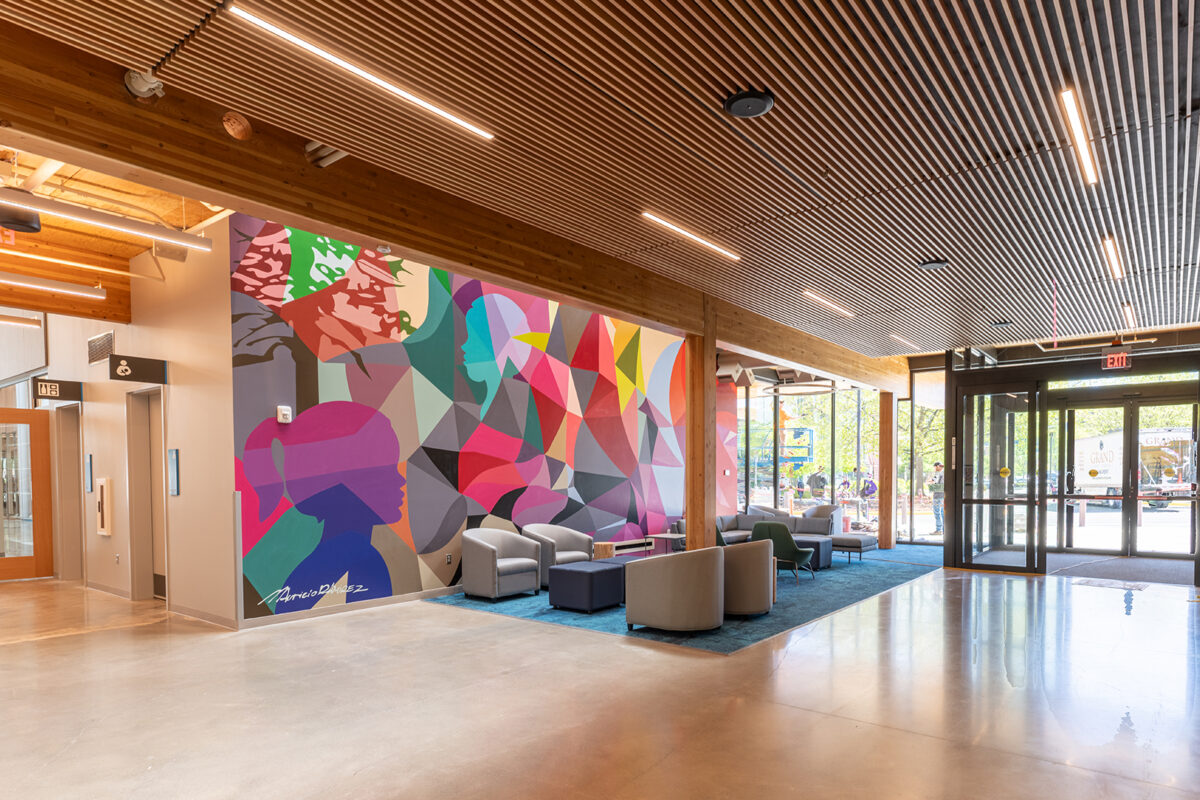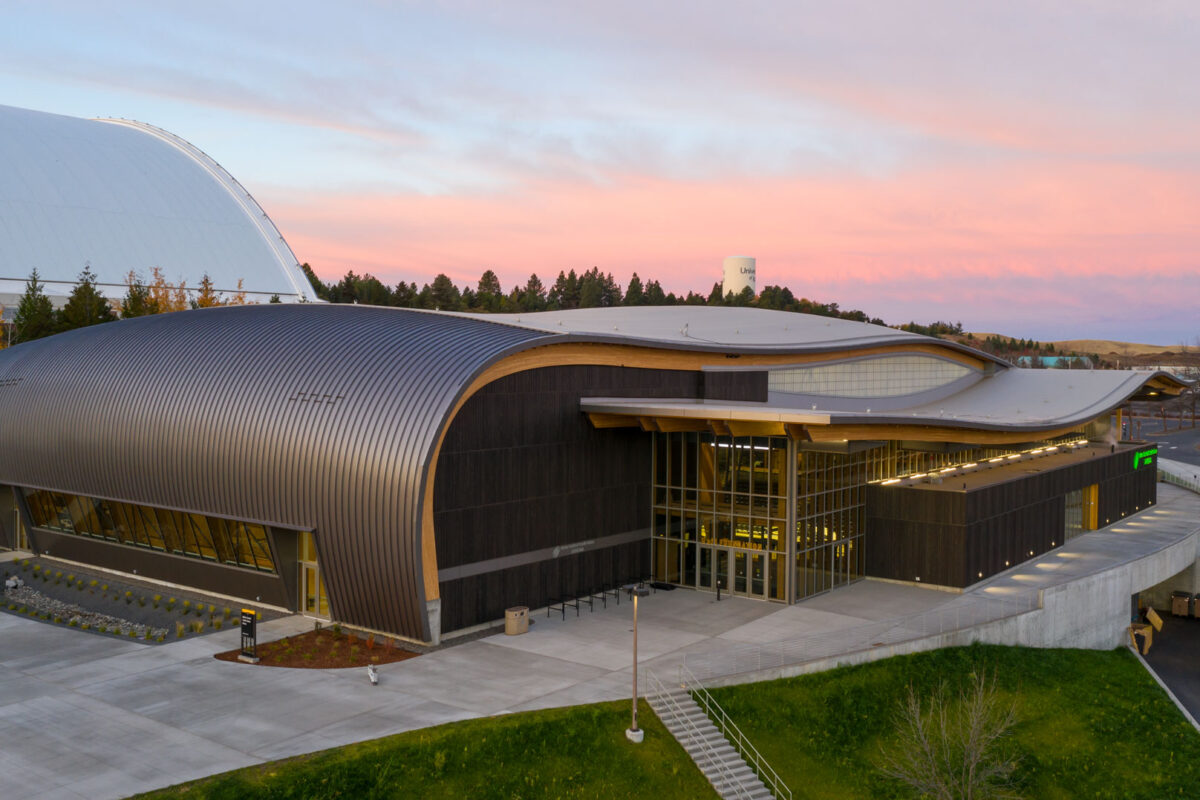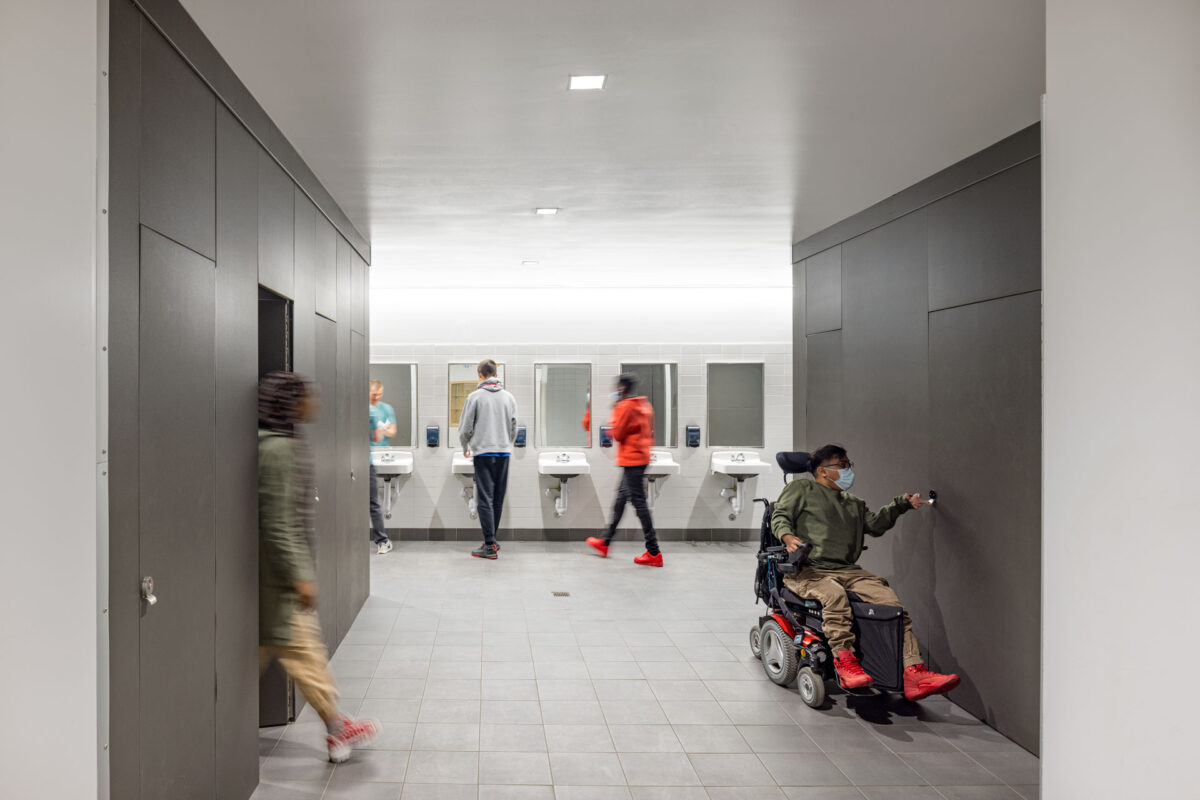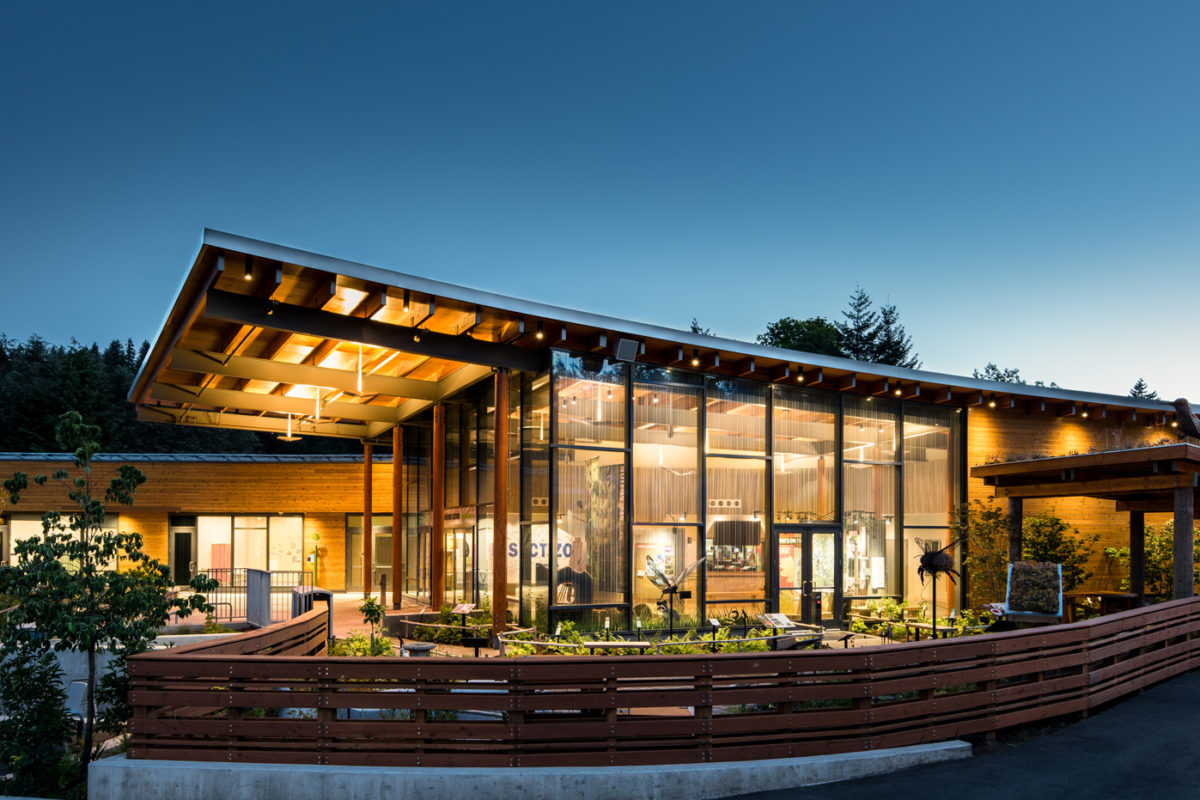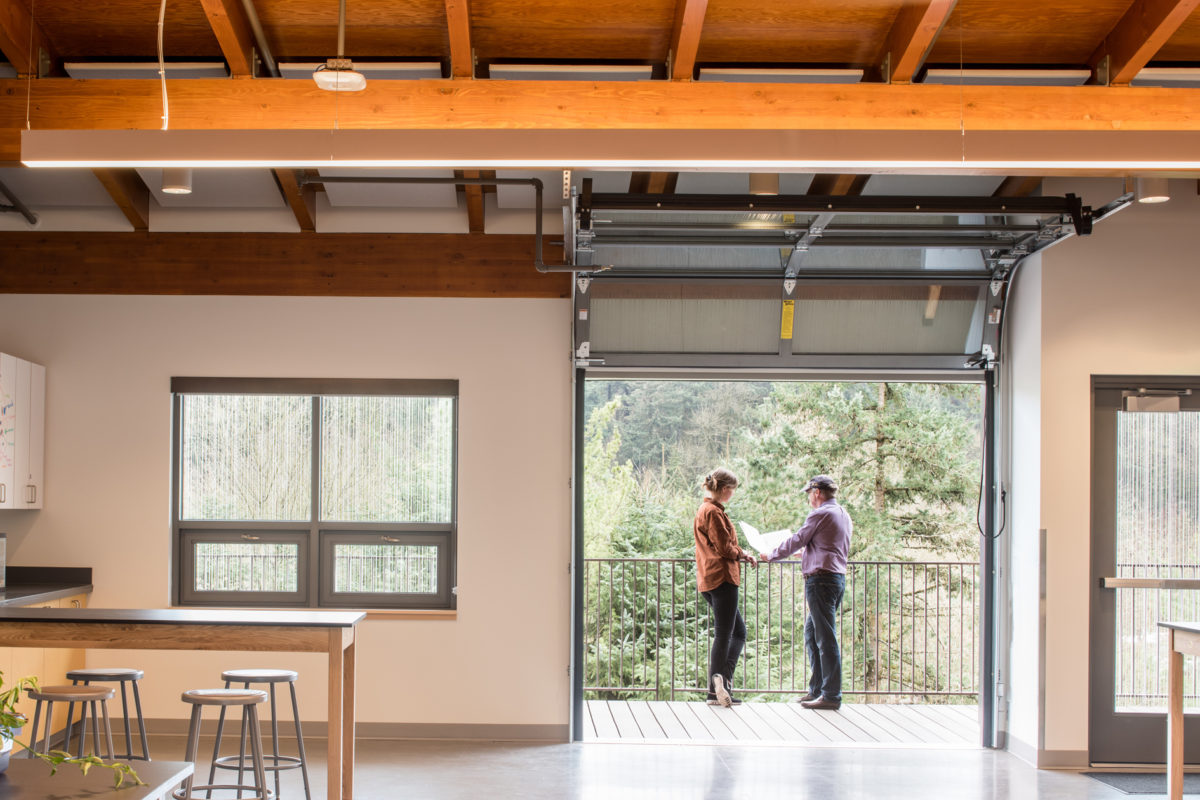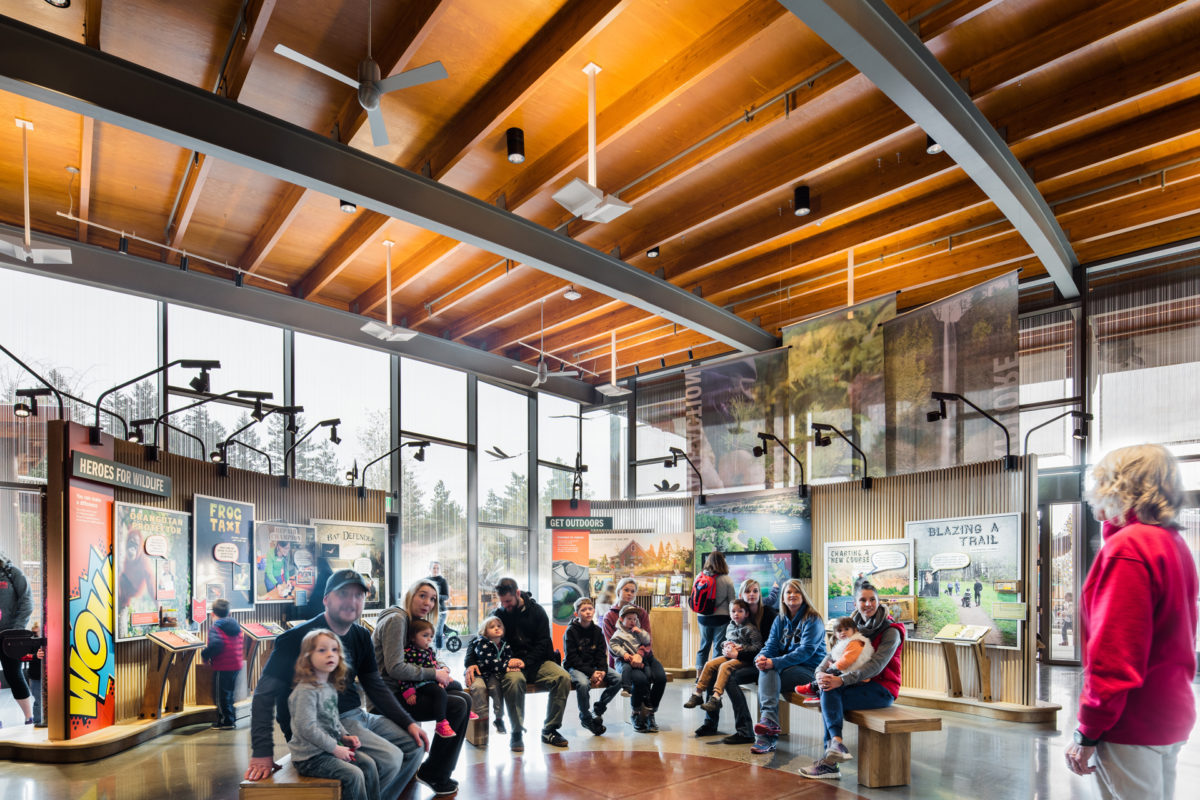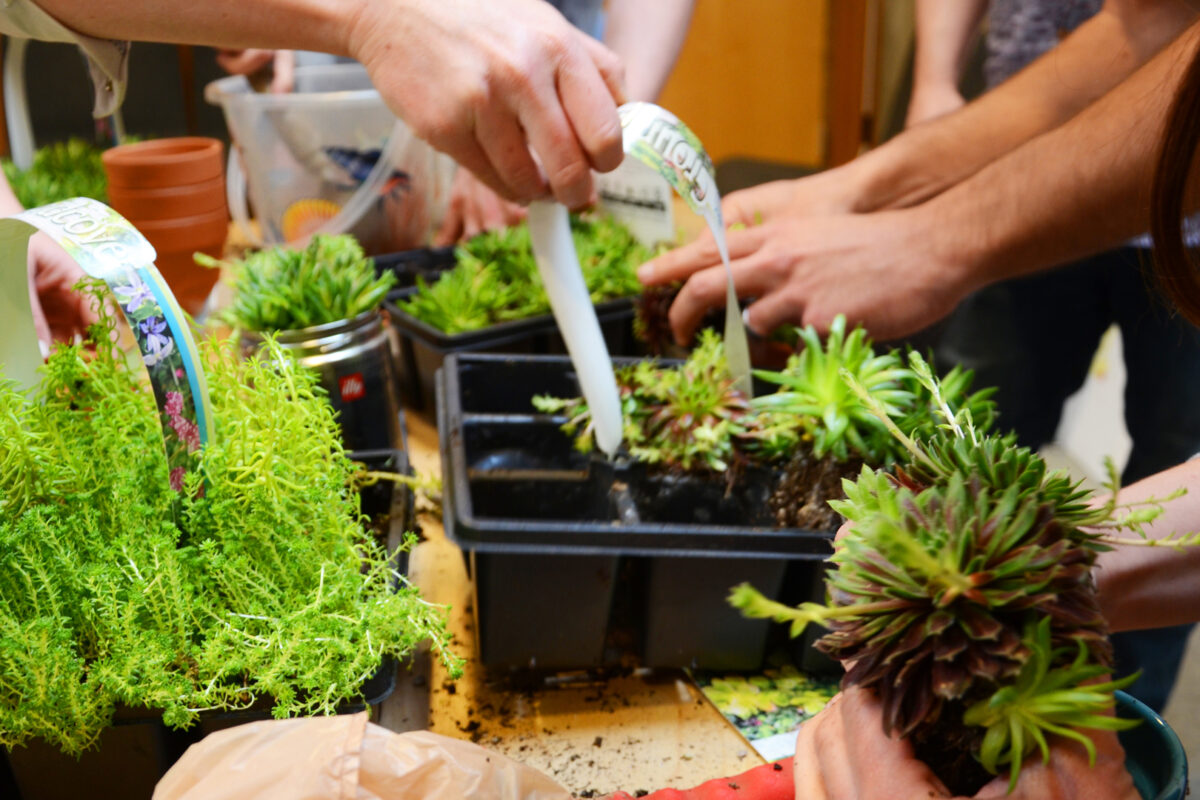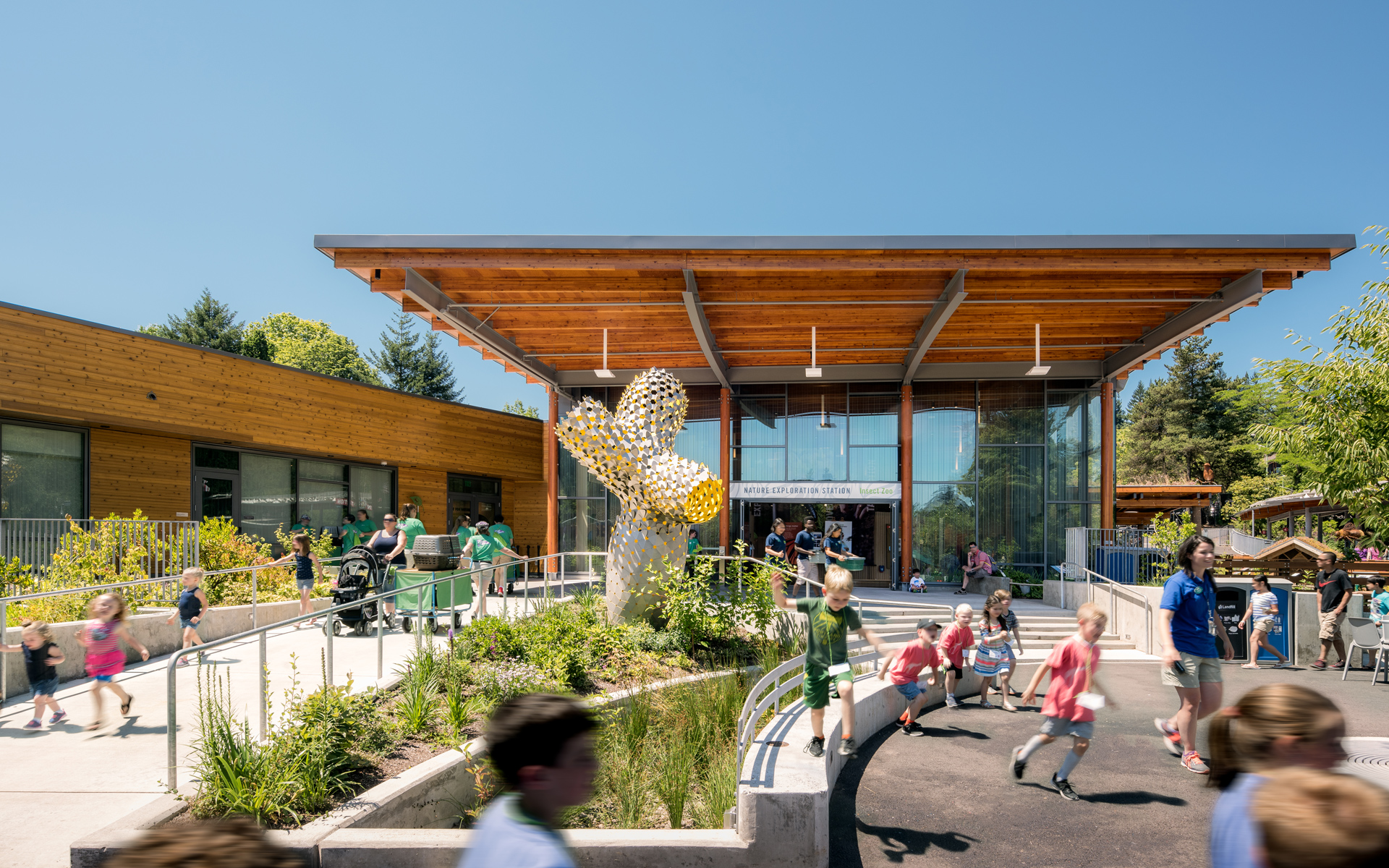
Oregon Zoo Education Center
Oregon Metro
The Oregon Zoo consistently attracts more than 1.6 million visitors per year and has more than 42,000 member households, giving it a unique platform for broad-based community education. Honored with an AIA COTE Top Ten award, the LEED Platinum Education Center educates the public on how to live sustainably with natural systems and habitats for the health of life.
Size: 20,000 sf
Location: Portland, OR
Stat: Net Zero & LEED Platinum
Design Architect: Opsis Architecture
Zoo Design / Insect Zoo Architect & Landscape Architect: Jones & Jones
Awards:
2020, WoodWorks, Green Building with Wood Award
2019, AIA, COTE Top Ten Green Building Award
2019, Association of Zoos and Aquariums, Exhibit Innovation Award
2018, AIA Portland, 2030 Award
2017, DJC Top Projects, Third Place, Public Project
2017, DJC Top Projects, Public Project People’s Choice
2017, DJC Top Projects, Energy Trust of Oregon High Performance Building Award, New Construction
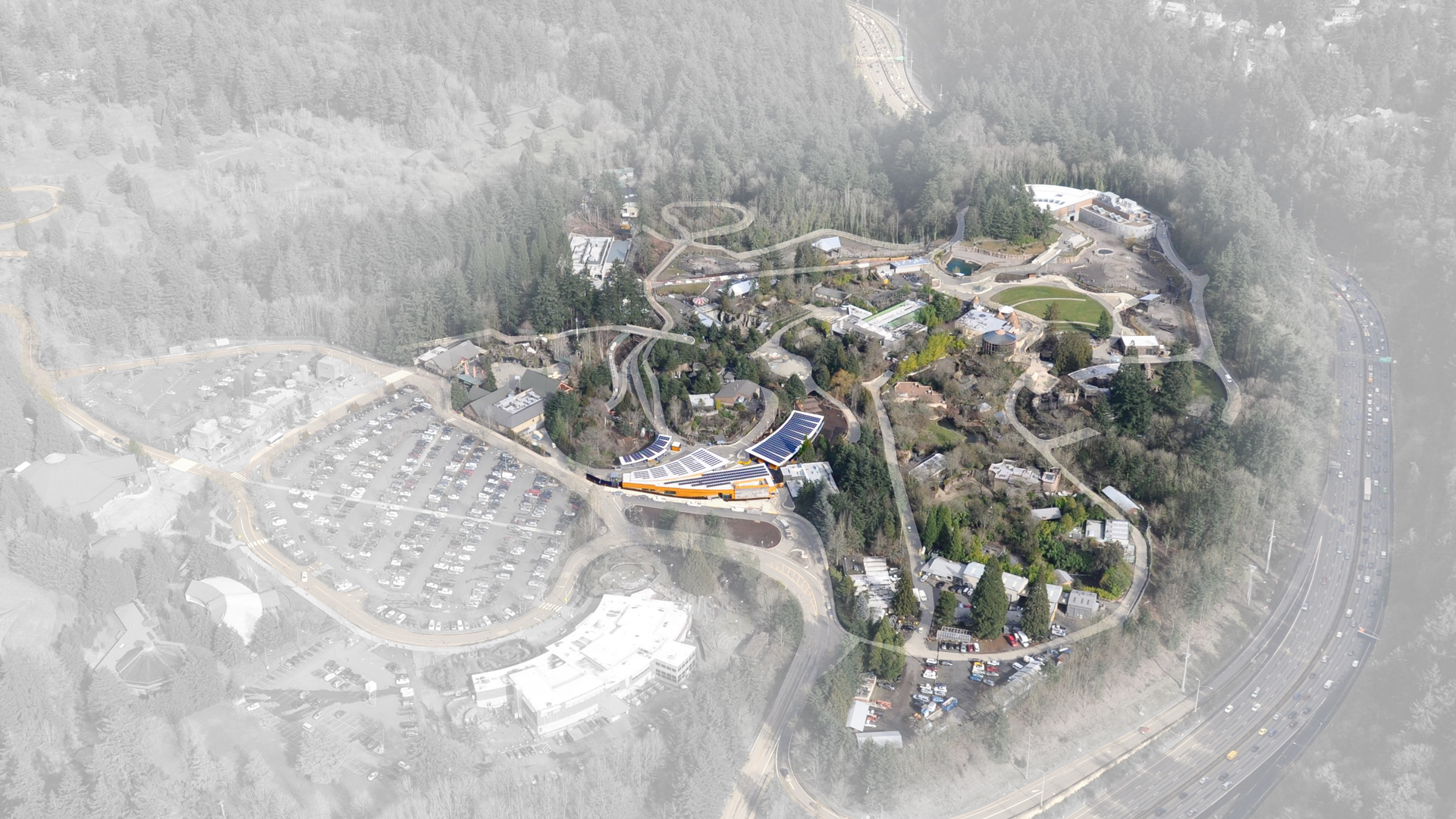

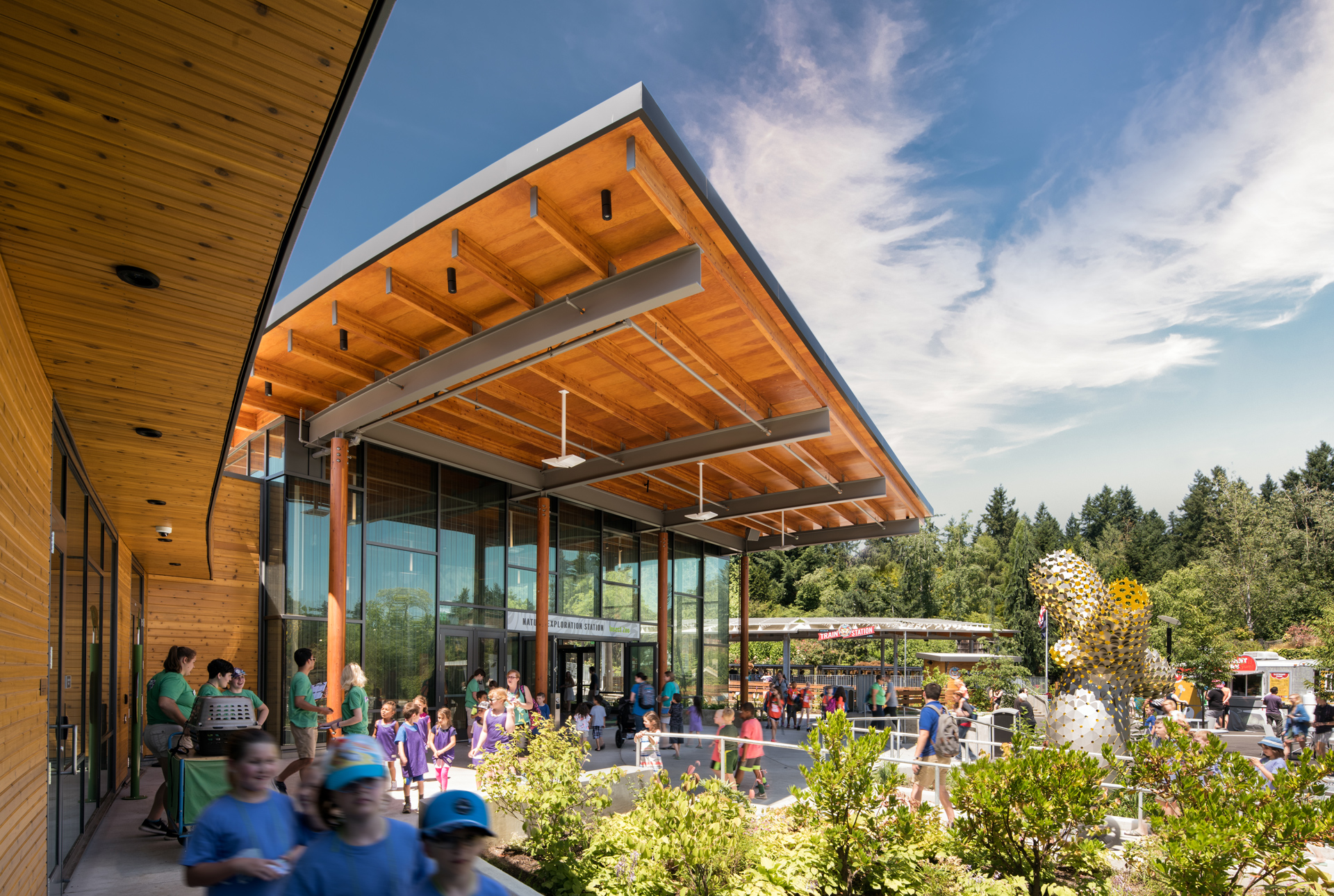
The West Plaza is a primary guest gathering space, integrated with the Education Center, and demonstrates native planting and stormwater bioswales.
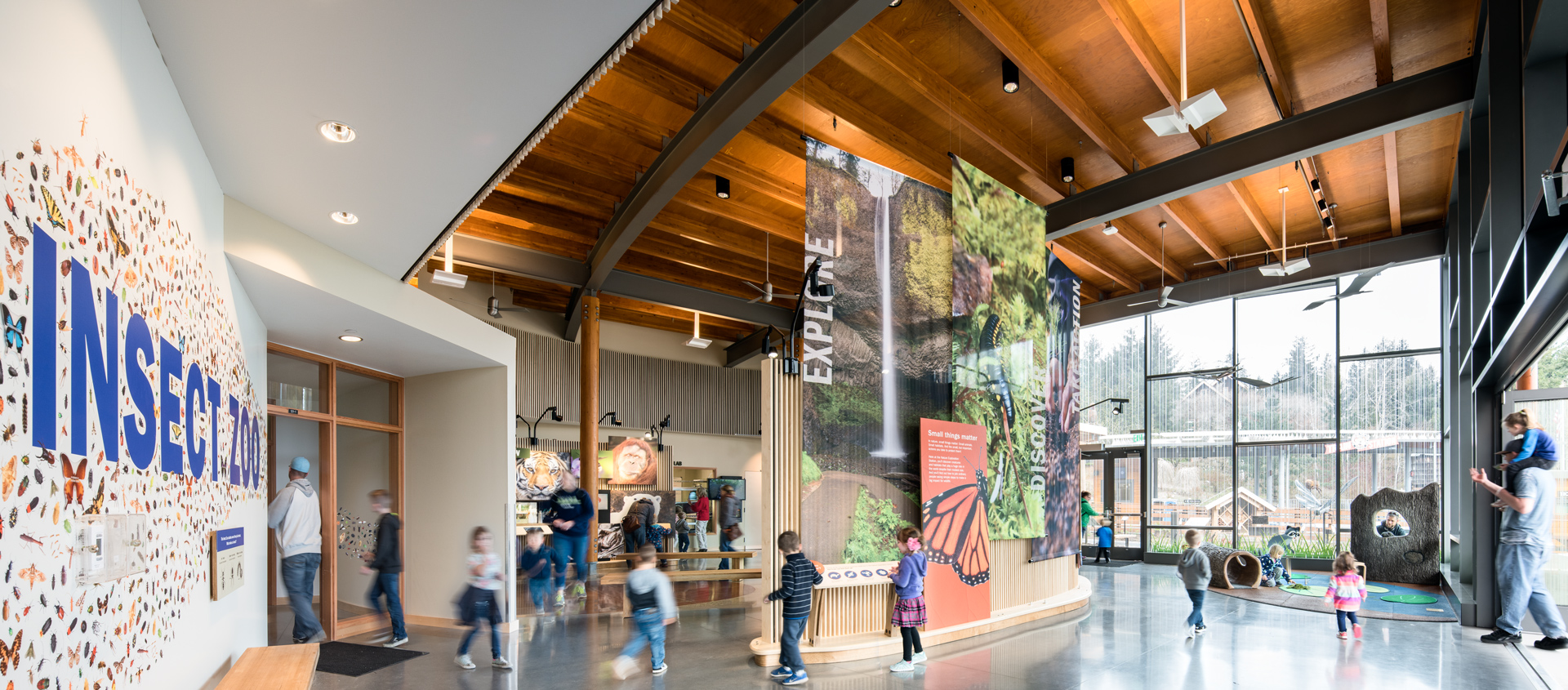

Working with specialized exhibit designers and an entomologist, our team worked to create an engaging experience—advancing the highest level of animal welfare, environmental literacy, and conservation science.
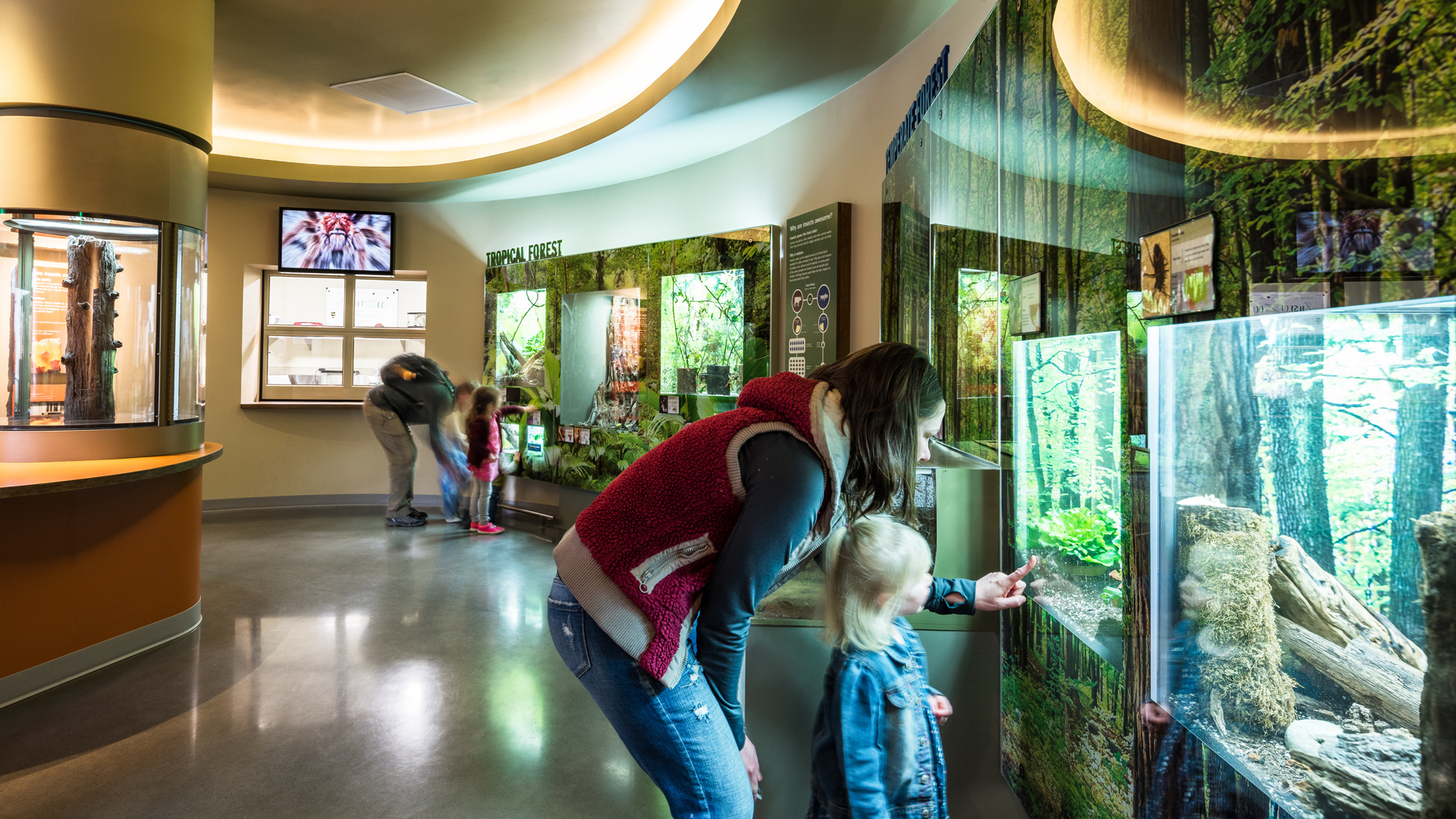
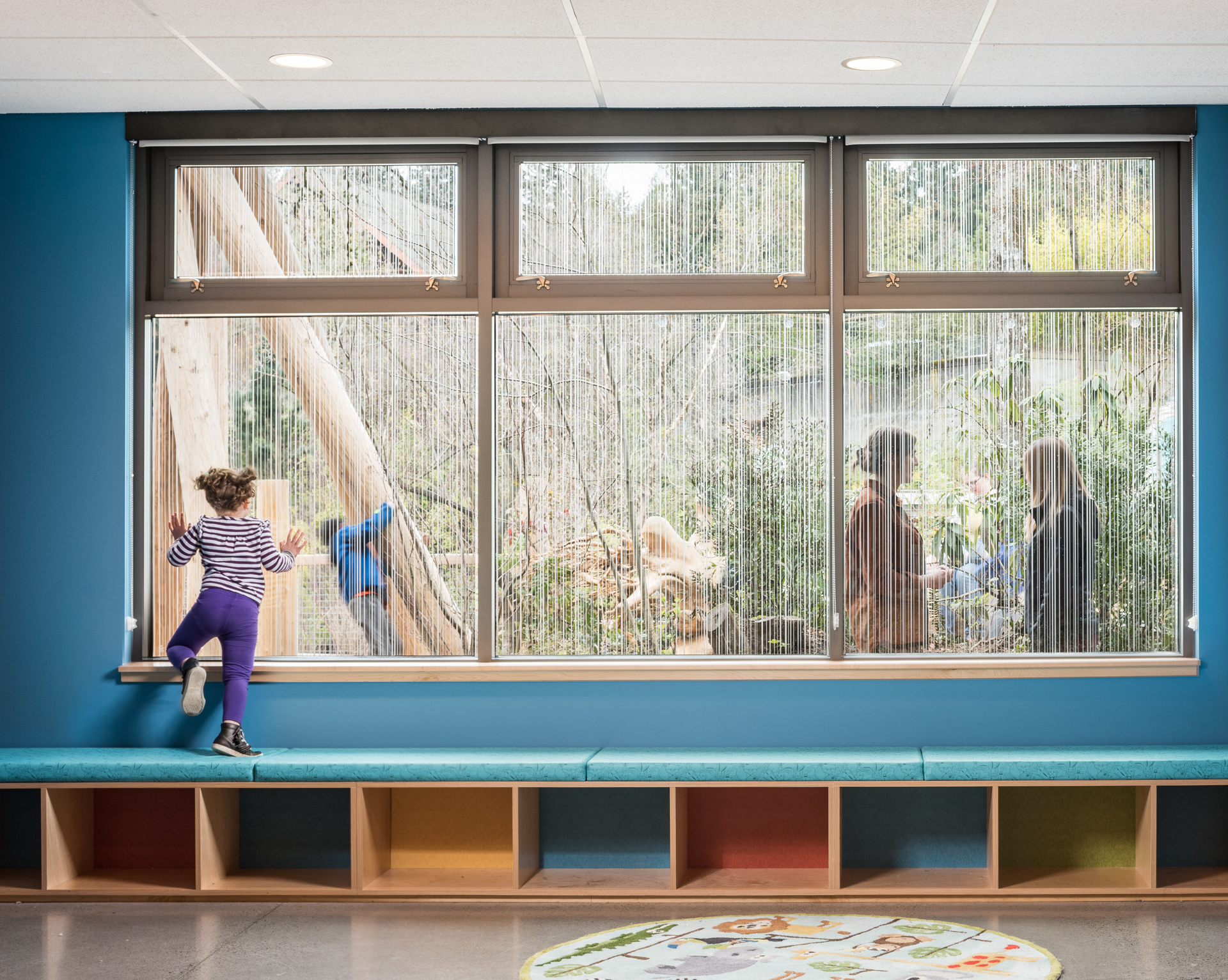
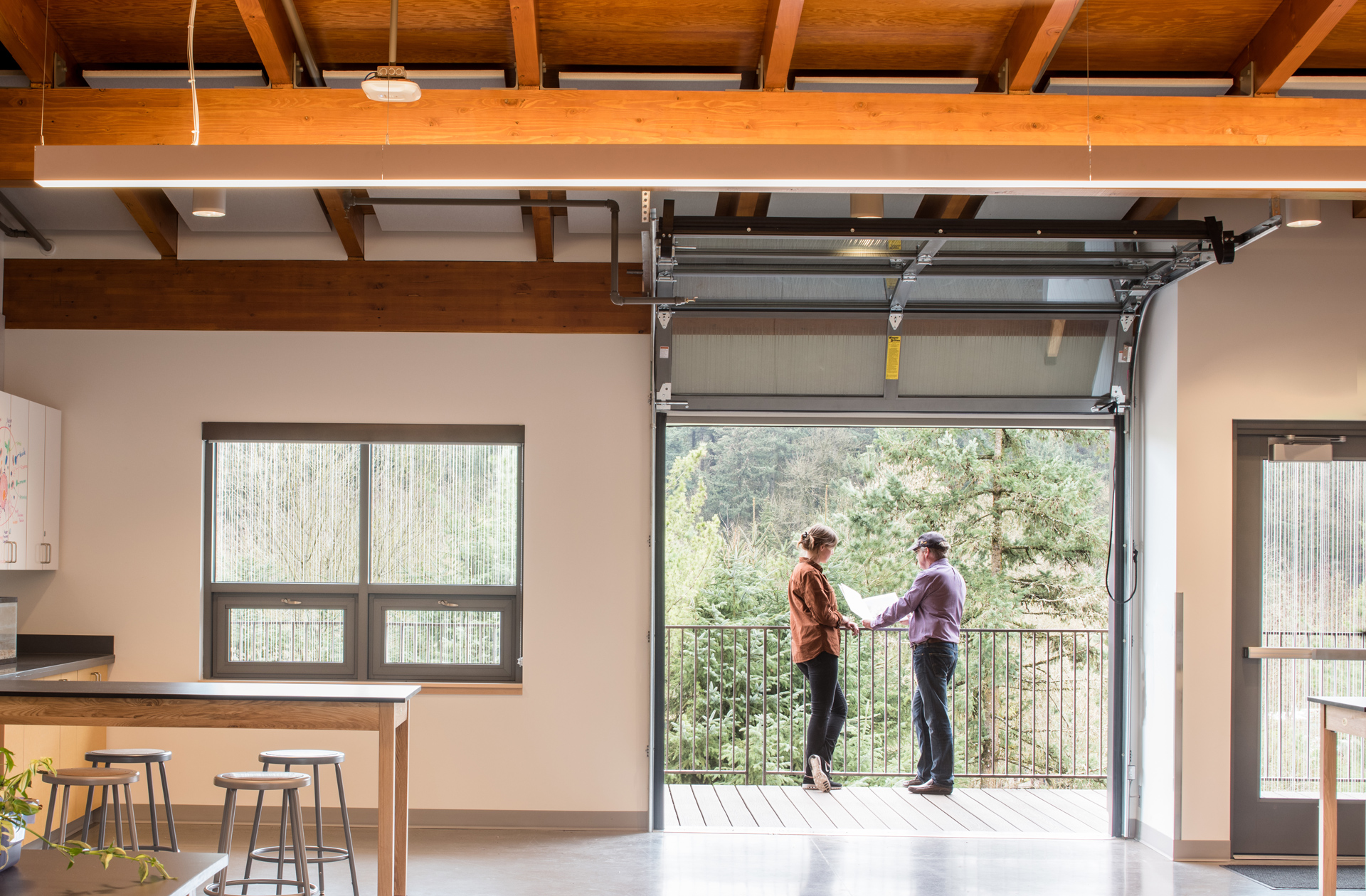
The Education Center houses staff offices, six classrooms, an environmental science classroom lab, and outdoor nature learning and play spaces. A large dividable multi-purpose meeting room serves the Zoo partners for community meetings and events focused on environmental health.
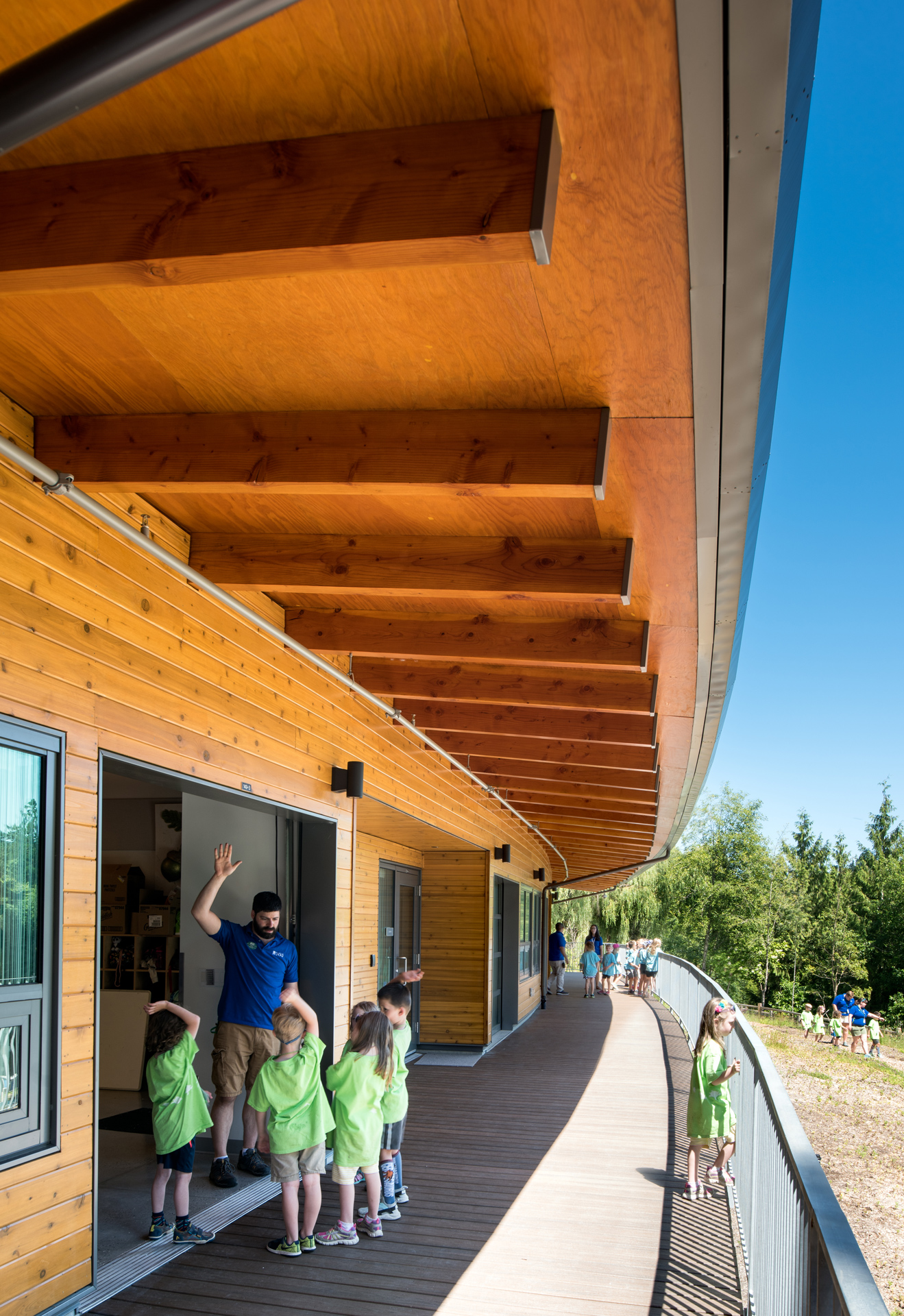
Built with Forest Stewardship Council-certified wood, the Education Center includes a wide variety of sustainable design features, including an extensive rooftop solar array, rain gardens that capture and clean stormwater before releasing it to the Willamette River or providing it for use in nearby restrooms, energy-efficient lighting and HVAC systems, radiant floor heating, and bird-friendly lighting and fritted glass windows.
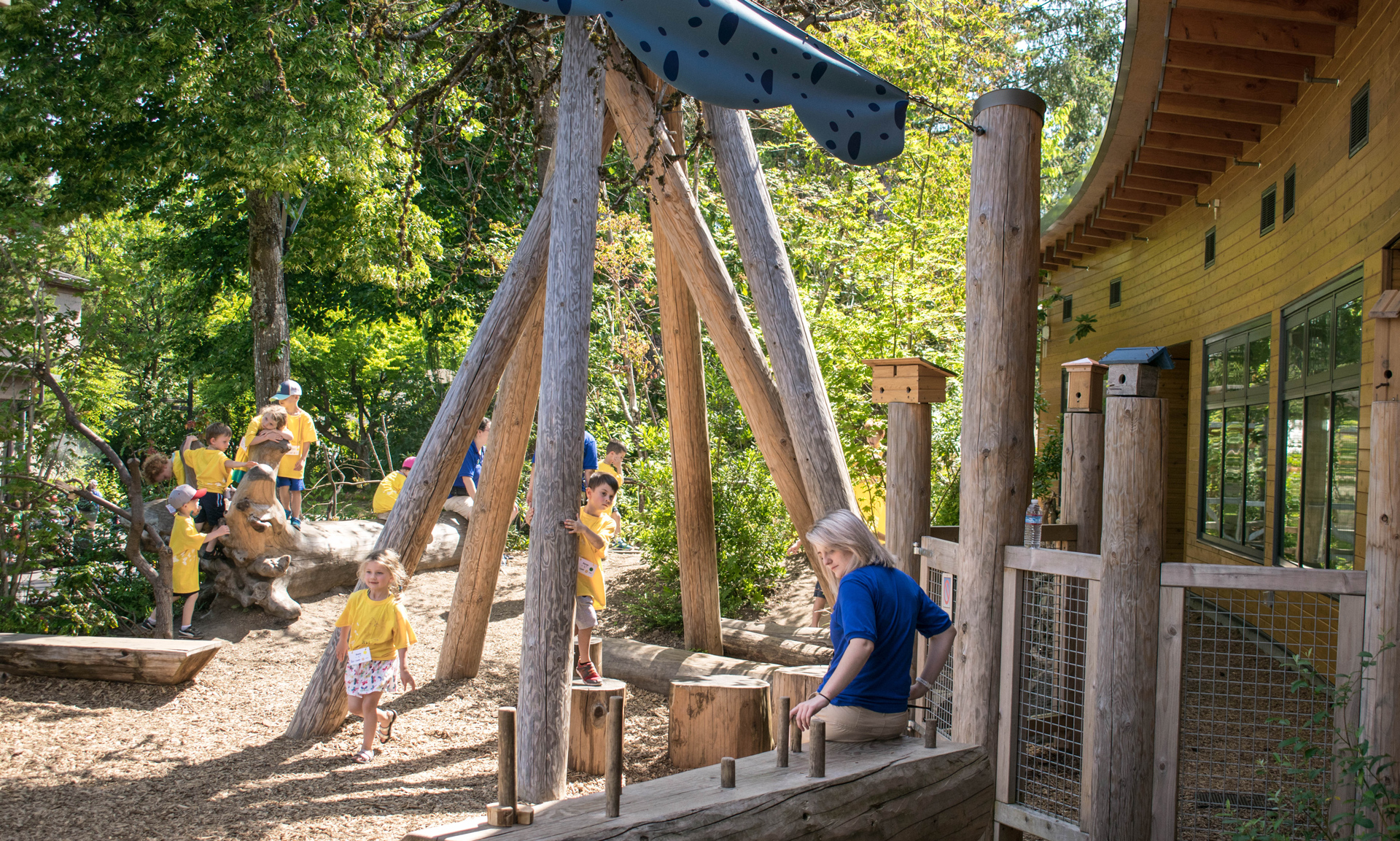
A key feature is a Back Yard Habitat, where volunteer Master Gardeners and Zoo Teen volunteers demonstrate sustainable landscape concepts and habitat recovery and enhancement through simple homeowner strategies. The Habitat was built with wood salvaged from the Zoo’s decommissioned Elephant Museum Building and pavers salvaged from the Elephant Plaza Picnic Area.


